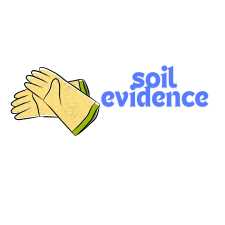Definition
Soil refers to the topmost layer of the Earth’s surface, composed of a mixture of minerals, decomposed organic material, moisture, gases, and living organisms. It acts as a vital environment for plants to grow and plays an essential role in supporting ecological balance and geological functions.
Composition
Mineral Particles
Organic Matter
Water
Air
Living Organisms
Types of soil
Alluvial Soils
Soil Characteristics:
Formed by the slow accumulation of fine particles transported by rivers, this soil is fertile and rich in minerals like potash and lime, though it typically lacks sufficient nitrogen content.
Geographic Setting:
Found across broad river basins, flooded lowlands, and coastal sediment zones.
Black (Regur) Soils
Soil Characteristics:
This moisture-retentive, clay-heavy soil is a product of volcanic rock weathering. Rich in nutrients such as calcium and magnesium, it supports crops that need deep-rooted, water-holding soils.
Geographic Setting:
Widespread in ancient lava-covered uplands and regions shaped by volcanic basalt formations.
Red Soils
Soil Characteristics:
Iron oxide gives this soil its distinctive red hue. It forms through the breakdown of crystalline rocks in warm climates and generally contains low organic matter and nutrients.
Geographic Setting:
Found in elevated landforms including gently rolling highlands, undulating plateaus, and rocky hillsides.
Laterite Soils
Soil Characteristics:
Developed in hot and humid areas with intense rainfall, these soils are heavily leached and acidic, often requiring amendments to support agriculture.
Geographic Setting:
Present in rain-soaked uplands, tropical hill forests, and weathered plateaus.
Desert/Arid Soils
Soil Characteristics:
Dry, loose, and low in organic content, this soil type is commonly sandy or gravelly. It lacks water retention capacity and is often alkaline in nature.
Geographic Setting:
Found in dry zones, including arid plains, desert expanses, and semi-arid landscapes.
Mountain Soils
Soil Characteristics:
Generally thin and coarse, these soils vary in fertility and are influenced by altitude and slope. They are more productive in valleys where organic material collects.
Geographic Setting:
Located across steep alpine slopes, mountain ridges, and cool, forested high-altitude areas.
Packaging & Preserving
Packaging
Definition
Packaging is the collection of all materials used to enclose, protect, display, carry, and store a product, from the point it is made until it reaches the consumer. This includes not only the visible container, but also any internal or external materials designed to support, label, seal, or cushion the item.
Components of Packaging
Primary Container
- The main enclosure that comes in direct contact with the product (e.g., pouch, blister pack, jar, or bottle).
Closure Systems
- Elements like caps, lids, plugs, or seals used to close and secure the primary container.
Secondary Packaging
- Additional layers that wrap or group primary containers—like cartons, sleeves, or boxes—for organization or extra protection.
Tertiary Packaging
- Heavy-duty packing used for bulk storage and shipping, including crates, stretch films, and pallets.
Labeling & Surface Elements
- Any printing, adhesives, coatings, or labels applied to the packaging to convey information or branding.
Preservation
Importance of Soil Evidence Preservation
- Soil evidence must be preserved to maintain its original properties, preventing contamination and alteration for accurate forensic analysis.
Preservation of Trace Elements
- Trace elements like minerals, pollen, and microbes in soil samples remain intact through proper preservation, enabling reliable comparison.
Collection Tools and Techniques
- Clean, sterile tools are essential for carefully collecting soil samples at the crime scene to avoid introducing foreign matter.
Sample Packaging
- Soil samples should be placed immediately into clean, labeled containers such as airtight plastic vials, glass jars, polyethylene bags, or paper envelopes, depending on soil type and moisture.
Pre-Packaging Treatment
- Moist soil samples must be air-dried before packaging to prevent biological degradation.
Sealing and Handling Precautions
- Containers should be sealed promptly after filling to protect the samples from contamination. Handling soil samples with gloves is necessary to avoid transferring external materials.
Storage Conditions
- Soil samples need to be stored separately from other evidence to maintain their purity. Maintaining stable environmental conditions, including consistent temperature and humidity, helps preserve the integrity of soil samples.
Documentation and Record Keeping
- The collection process must be documented thoroughly with photographs and detailed notes. Every action taken with the soil samples should be recorded to ensure evidence integrity and legal admissibility.
Chain of Custody
- A clear chain of custody should be maintained to track every handling and transfer of soil samples from collection to laboratory analysis.
Preservation Methods
- Physical preservation methods like drying and airtight sealing are commonly used for soil samples. Chemical stabilizers may be applied when necessary but are less commonly used. Controlled storage environments are vital to minimize soil sample degradation over time.
Timing of Preservation
- Preservation efforts must begin immediately after sample collection to prevent deterioration. Rapid preservation is critical to ensure soil evidence remains suitable for forensic testing
Forensic Examination of Soil Evidence
Visual Analysis
Observe soil color, texture, and noticeable elements.
Soil coloration can reveal the presence of minerals, organic materials, and moisture levels.
Texture evaluation focuses on particle sizes and visible fragments such as sand grains or organic matter.
Useful for initial categorization of soil and spotting any extraneous substances.
Physical Analysis
Separate and measure soil particles by size through processes like sieving and sedimentation.
Assess moisture content and soil density to evaluate compaction and condition.
These physical traits assist in differentiating soils from various environments.
Chemical Analysis
Employ advanced techniques such as Atomic Absorption Spectrometry and Inductively Coupled Plasma Mass Spectrometry for detailed elemental breakdown.
Determine the acidity or alkalinity of soil using pH testing.
Evaluate organic content to identify decomposed biological material.
Detect presence of contaminants like fertilizers or industrial chemicals that could link soil to a particular source.
Microscopic Analysis
Use stereomicroscopy to examine larger particles in three dimensions.
Apply polarizing microscopy to identify mineral crystals by studying their interaction with polarized light.
Identify microscopic features including pollen, spores, and tiny fossils that can indicate the soil’s origin.
Instrumental Techniques
X-ray Diffraction (XRD) to determine the specific minerals by analyzing diffraction patterns.
Scanning Electron Microscopy (SEM), often combined with Energy Dispersive Spectroscopy (EDS), to capture detailed surface images and elemental composition.
Fourier Transform Infrared Spectroscopy (FTIR) to detect both organic and inorganic substances by measuring infrared light absorption.
Gas Chromatography-Mass Spectrometry (GC-MS) for identifying organic pollutants, volatile compounds, and contaminants within the soil.
Questions and Answers
Q: Why is soil evidence significant in forensic cases?
Ans: Due to its distinct makeup, soil can connect a person or item to a particular crime location, serving as critical trace evidence.
Q: Which components of soil are typically examined?
Ans: Analyses focus on minerals, organic substances, moisture levels, trace elements, and any pollutants or contaminants present.
Q: What is the proper way to collect soil samples at a crime scene?
Ans: Samples must be gathered carefully using sterile instruments to avoid contamination and placed promptly into clean, labeled containers.
Q: Why is it necessary to dry soil samples before packaging when they are wet?
Ans: Drying moist soil prevents the breakdown caused by microbial activity, preserving the sample’s original characteristics.
Q: What containers are suitable for storing soil samples?
Ans: Depending on soil conditions, airtight plastic tubes, glass jars, polyethylene bags, or paper envelopes are used for storage.
Q: What is the initial step in analyzing soil in forensic investigations?
Ans: An initial visual inspection evaluates soil color, texture, and visible particles to categorize the sample.
Q: How does the color of soil assist forensic analysis?
Ans: Soil color offers clues about the mineral makeup, organic content, and moisture status, aiding in soil identification.
Q: What physical procedures are applied to soil samples?
Ans: Techniques such as sieving and sedimentation are employed to separate particles by size, along with measuring moisture and density.
Q: What is the goal of chemical testing in soil analysis?
Ans: Chemical evaluations detect elemental makeup, pH level, organic materials, and possible pollutants in the soil.
Q: Can you name instrumental techniques for mineral analysis in soil?
Ans: X-ray Diffraction (XRD) reveals mineral structures, while Scanning Electron Microscopy (SEM) provides detailed imagery and elemental data.
Q: What information can polarizing microscopy provide about soil?
Ans: It identifies mineral crystals and their optical characteristics, which are key for soil identification.
Q: Why is maintaining a chain of custody crucial for soil evidence?
Ans: It documents every transfer and handling step to preserve the evidence’s authenticity and legal validity.
Q: How does FTIR spectroscopy aid in soil examination?
Ans: FTIR identifies both organic and inorganic compounds based on their infrared absorption patterns.
Q: What is the function of GC-MS in analyzing soil samples?
Ans: It detects volatile organic compounds and contaminants, helping to characterize the soil.
Q: Why should soil samples be stored separately from other types of evidence?
Ans: Separation prevents contamination and keeps the soil sample uncontaminated.
Q: How does moisture content impact soil preservation?
Ans: Excess moisture can encourage microbial activity that degrades the soil sample.
Q: What is the importance of microscopic analysis in soil forensics?
Ans: It reveals micro-elements like pollen and spores that provide insight into the soil’s source and environment.
Q: What are the typical particle size ranges found in soil?
Ans: Sand ranges from 0.05 to 2 mm, silt from 0.002 to 0.05 mm, and clay particles are smaller than 0.002 mm.
Q: Is it possible for soil evidence to connect a suspect to more than one crime scene?
Ans: Yes, soil profiles from different locations can be compared to establish or rule out connections.
Q: How can contaminants in soil aid forensic investigations?
Ans: They may point to industrial or farming activities near the soil’s origin.
Q: What measures are taken to avoid contamination during soil collection?
Ans: Use of gloves and sterile equipment, along with careful handling to prevent mixing samples.
Q: Why is drying soil samples important before storage?
Ans: Drying prevents changes caused by biological or chemical reactions while in storage.
Q: How do environmental factors affect the storage of soil samples?
Ans: Variations in temperature and humidity can cause changes that compromise sample integrity.
Q: What does soil texture indicate about its origin?
Ans: Texture reflects how the soil was formed, its weathering history, and the depositional environment.
Q: How is soil density typically determined?
Ans: By measuring the mass relative to its volume, often using core samples.
Q: What information can pollen analysis in soil provide?
Ans: It can reveal geographical location and seasonality relevant to the soil.
Q: Is chemical stabilization commonly used in soil preservation?
Ans: No, it’s infrequently applied and reserved for special cases.
Q: When should preservation of soil samples begin after collection?
Ans: Immediately, to avoid degradation and maintain evidence quality.
Q: What can the presence of specific minerals in soil reveal?
Ans: It can indicate particular geographic or environmental origins.
Q: Can soil evidence help rule out suspects?
Ans: Yes, if the soil on a suspect does not match the crime scene, it can exclude them from suspicion.


